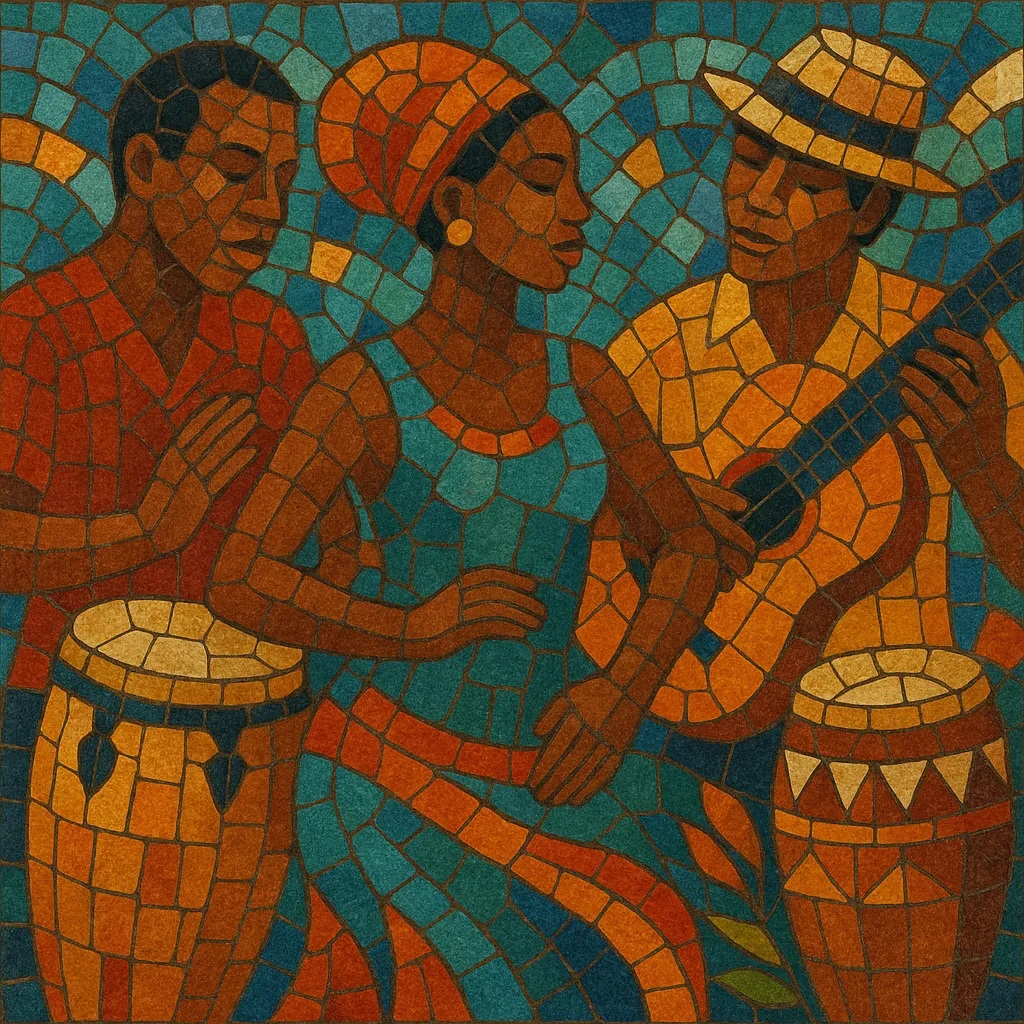Latin Afrobeats is a hybrid of West African Afrobeats and Latin urban pop in which Spanish (and sometimes Portuguese) lyrics ride syncopated, polyrhythmic grooves. It marries Afrobeats’ swung shakers, off‑beat hi‑hats, guitar licks, and buoyant bass with dembow and dancehall drum patterns common to reggaeton and Latin pop.
The result is a bright, dance‑forward style with catchy toplines, call‑and‑response hooks, and concise song forms tailored to streaming. Production tends to be minimal yet percussive, with Afro‑percussion (shekere, conga/bongo colors), plucked guitars or synth plucks, and warm sub‑bass supporting melodies that often draw on pentatonic or natural minor scales. Themes revolve around romance, partying, and feel‑good celebration, making the music equally at home in clubs and playlists.
Latin Afrobeats emerged in the late 2010s as Latin urban artists began adopting the bounce and polyrhythms of West African Afrobeats, while African artists explored Spanish‑language collaborations. High‑profile cross‑continental projects—such as Mr Eazi’s collaborations with J Balvin and the appearance of Afrobeats textures on Latin trap/reggaeton releases—helped codify the sound. Producers also drew on moombahton’s mid‑tempo club feel, easing the fusion between dembow and Afrobeats swing.
The streaming era accelerated discovery: Latin audiences encountered Afrobeats via viral hits and remixes, while African audiences discovered Spanish‑language versions of Afrobeats songs. Labels and producers increasingly sought bilingual or cross‑market singles, bringing together Latin stars (from Puerto Rico, Colombia, Panama, and Spain) with Nigerian and Ghanaian hitmakers. This period normalized Spanish hooks over Afrobeats grooves, and vice versa.
By the early 2020s, Latin Afrobeats had become a recognizable flavor within urbano latino, with club‑ready tempos (roughly 95–110 BPM), melodic minimalism, and warm, percussive mixes. Festival stages and global playlists began slotting Spanish‑language Afrobeats next to reggaeton and dancehall, while producers refined recipe‑like drum patterns (tresillo/dembow accents over the Afrobeats pocket) to achieve the style’s signature bounce.
Today the style thrives through collaborations, Spanish remixes of African hits, and Latin artists releasing original tracks built on Afrobeats rhythms. Its presence has subtly reshaped Latin pop, nudging urbano toward more syncopated grooves and guitar‑driven textures while maintaining the concise formats favored by digital platforms.


